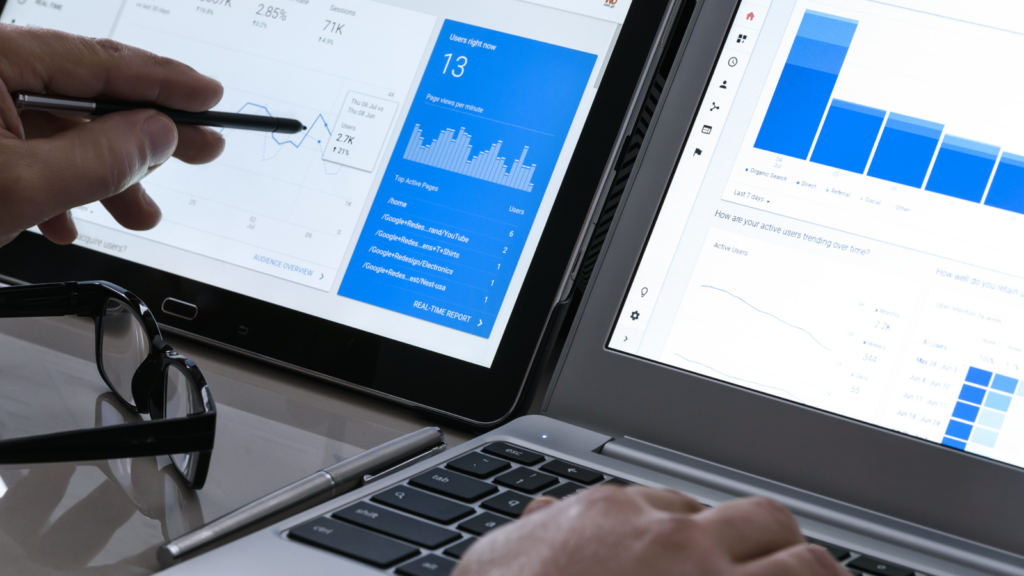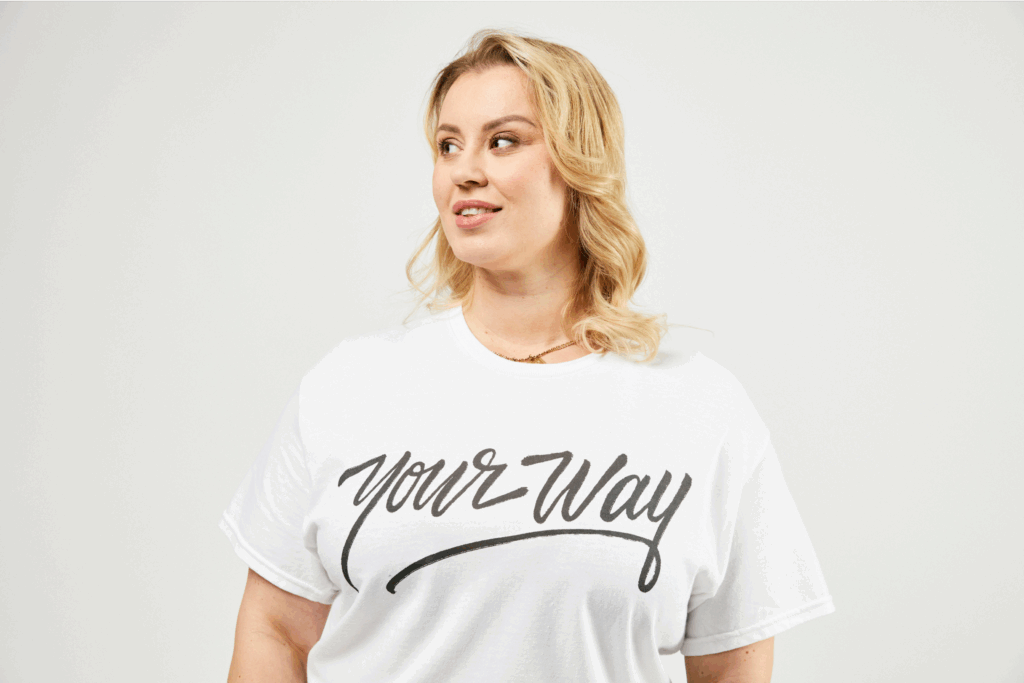Start your custom printing business today!
T-shirts are a classic, beloved part of everyone’s wardrobe, so it’s no wonder the t-shirt market is competitive. There’s fantastic profit potential if you have the right approach. We’ll explore how to start a t-shirt business that makes you big money, from market research and choosing an eCommerce platform to marketing and pricing strategies.
Let’s dive in and discover tips for creating custom t-shirts and earning passive income!
This post may contain affiliate links, which means we may earn a commission if you make a purchase through those links. This comes at no additional cost to you.
Key takeaways
- The t-shirt market is expected to grow by 11.5% annually from 2025 to 2030, making now a great time to start a successful t-shirt business.
- Partnering with a print-on-demand service like Printify reduces upfront costs, streamlines operations, and lets you focus on creating and marketing your t-shirts.
- Choosing a specific niche, like chinchilla lovers or pickleball enthusiasts, helps you stand out and target a defined audience.
- Effective marketing and business strategies, including social media, influencer partnerships, and SEO, are essential to driving traffic and increasing sales.
- Tracking sales data and customer feedback lets you refine your t-shirt designs, pricing, and marketing to ensure steady business growth.

“Keep going and never give up. One day, you’ll look back at the numbers and realize people have spent $30,000 in your shop. The whole concept is amazing, though I still find it hard to believe sometimes.”
Why sell t-shirts?
The global custom t-shirt printing market was worth about $5.16 billion in 2024 and is expected to grow by 11.5% annually from 2025 to 2030. Securing even a tiny piece of that pie would bring in a lot of profits for your online t-shirt business.
When learning how to sell print-on-demand t-shirts, you must decide what kind of business you’ll build. Let’s look at your two main options.
Retail vs eCommerce business
In 2023, global online sales were around 5.8 trillion. Experts predict they will grow by 39% in the next few years, reaching over 8 trillion by 2027. This shows just how popular online shopping has become and why it’s likely the better choice for your shirt business.
Let’s look at the differences between physical and online stores.
| Traditional retail | eCommerce | |
|---|---|---|
| Location | ||
| Accessibility | ||
| User experience (UX) | ||
| Delivery | ||
| Business costs | ||
| Setup difficulty |
Learn more about business models like Print on Demand and how to start a print-on-demand business.
How to start a t-shirt business: Step-by-step guide
Let’s start your clothing line, one step at a time.
1. Do market research

What do you need to start a custom t-shirt printing business? First, find out what’s going on in the market – what other clothing brands and t-shirt businesses are selling, who’s buying t-shirts, and what qualities people look for in their apparel.
Take a look at successful Shopify t-shirt stores for inspiration. What are their strengths and weaknesses, and what can you do better than them?
Start with the search engines of huge online retailers like Amazon. Look for terms like trending t-shirts, best-selling, or popular tees.
Narrow down those searches by adding terms connected to your target market. For example, tennis player t-shirts or t-shirts with Italian Greyhounds.
Look up these products with tools like Google Keyword Planner or Google Trends. These will provide more detailed information, like similar searches, your customers’ secondary interests, demographics, and location.
Learn more about how to sell t-shirts on Amazon and Etsy.
2. Choose a niche
Now that you’ve researched what’s popular in the t-shirt market, you’ll need to find your niche. This is the particular group of people you want to tailor your products to.
It’s fundamental for your success. There’s a lot of competition, and if you try to sell to everyone, you’ll end up selling to no one.
Let’s say you are interested in selling to women who have pets. Look for keywords related to different pets, explore all the related queries, and gather any information that helps you understand your target audience. Then, narrow down your niche based on all the data gathered.
For example, sell t-shirts to women in California who own Labrador Retrievers.
Learn more about print-on-demand niches on our blog and YouTube channel.
3. Write a business plan

A business plan includes:
- Your company’s goals
- How and when you plan to achieve them
- Your chosen business model (for example, Print on Demand)
A traditional plan is very detailed and describes the business idea, product, target market, and the company’s structure, including staff and locations. Financial institutions will require a business plan if you’re applying for loans or financing.
Small business owners may prepare a lean plan. It’s a more flexible road map with essentials like key activities, revenue streams, assets, and partners. Remember to make your unique selling proposition very clear.
The US Small Business Administration provides templates for preparing different business plans.
4. Partner with a POD company
Wondering how to start a t-shirt business online without worrying about efficient inventory management, fulfillment, and initial investment? Use a print-on-demand (POD) service.
Why choose POD?
- Low startup costs: There’s no need to buy inventory upfront.
- Scalability: Easily add new products without worrying about stock management.
- Testing: Quickly experiment with different t-shirt design ideas to see what sells.
- No risk: T-shirts are customized after your customer makes a purchase.
Once you sell a t-shirt online, a POD company will print, package, and ship it to your customer. This leaves you with plenty of time to focus on creating new designs and marketing your t-shirts.
Printify and Printful are the best choices for starting your t-shirt company.
Here are Printify’s main benefits:
- No upfront production cost. Create an account and start selling t-shirts online for free.
- Largest selection in POD. Explore our Catalog of over 1,300 items, including high-quality t-shirts from popular brands.
- Worldwide shipping. Our international network of Print Providers will ship your orders all around the globe
- 24/7 Support. Our Support Team is always here to help you with any questions.
- Design tools. The free Product Creator has tons of valuable design tools, like a pattern creator, a text editor, an AI Image Generator, a graphics library with free t-shirt designs, and more.
- Integrations. We offer integrations with all the popular eCommerce channels to streamline listing and order management.
5. Pick a t-shirt
Not all t-shirts are equal – they come in a range of fabrics, styles, and fits. You need to choose the t-shirt models that your customers will like most.
Here’s a quick t-shirt 101:
- T-shirts are made from various fabrics. The most popular ones among consumers are cotton, polyester, or blends.
- Some fabrics and designs are more compatible with specific printing techniques. For example, the popular direct-to-garment printing (DTG) prints look best on 100% cotton or polyester-cotton blend shirts. In contrast, all-over-print (AOP) shirts only work on polyester and other synthetic fabrics.
- Eco-friendly options made from organic and sustainable materials will be a hit with your environmentally conscious shoppers.
Always order product samples to ensure the t-shirt design and fabric quality match your expectations.
How to choose a t-shirt from Printify:
- Browse our Catalog for women’s, men’s, and kids’ t-shirts to find one your target audience will love.
- Choose from over 20 quality brands, including Bella+Canvas and Gildan.
- Choose a Print Provider, considering their score, location, and production time.
Watch this comparison video between the Bella+Canvas 3001, Gildan 64000, and Gildan 5000, and check out our article on the best t-shirts for printing.
5. Create your own t-shirt designs

A good design is the key factor influencing customers to buy from your online t-shirt business.
Here are some quick tips for creating a best-selling t-shirt design:
- Conceptualize: Brainstorm t-shirt design ideas that resonate with your target audience and brand identity.
- Find your design style: Explore online resources and tools to create your own t-shirts, or consider collaborating with freelance artists on platforms like Fiverr or Upwork.
- Prioritize quality and simplicity: Keep your t-shirt designs clean and professional, using high-quality visuals and easy-to-read fonts. Limit the number of colors for a more polished look.
How to apply your t-shirt design:
- Use our Product Creator to upload and adjust your design placement on the t-shirt. Use features like the AI Image Generator to create something entirely new without hiring professional designers.
- Create product mockups to visualize your designs.
- Order samples to ensure quality before adding products to your store.
Find more graphic design tips in our blog to take your t-shirt line to the next level.
6. Create an online store
Once you’ve created some custom t-shirts, you’ll need a place to sell them.
The easiest and fastest way is to create an eCommerce store. Printify easily connects with the most relevant platforms – simply pick the one best suited for your online t-shirt business.
Marketplaces (Etsy, eBay, Amazon):
| Pros | Cons |
|---|---|
eCommerce platforms (Shopify, BigCommerce):
| Pros | Cons |
|---|---|
All-in-one website builders (Wix, Squarespace)
| Pros | Cons |
|---|---|
Printify API, open-source platforms, CMS, and plugins (WordPress and WooCommerce, PrestaShop)
| Pros | Cons |
|---|---|
Printify Pop-Up Store
| Pros | Cons |
|---|---|
Check out the best sites to sell online and decide which one is the right fit for you.
7. Set prices
When you sell t-shirts online, pricing can make or break your online business.
First, consider your variable costs, fixed costs, and competitor pricing. Then, pick the best pricing strategy for your business.
1. Cost breakdown
Before setting your price, analyze all of your costs.
Variable costs:
- Blank shirts: Printify partners with several Print Providers to offer a variety of t-shirt styles and materials at different price points. Choose based on your target audience and design needs.
- Printing: Cost varies depending on the printing technique (e.g., DTG, screen printing).
- Shipping: Factor in both domestic and international shipping rates based on your target market.
Fixed costs:
- Design software subscription (optional): Look for free design tools or low-cost subscription plans.
- Online store platform fees: Many platforms offer free trials or tiered plans. Don’t forget about transaction fees.
- Marketing and advertising costs: Budget for social media ads or influencer marketing if needed.
2. Competition research
Take a look at how competitors price their products in your t-shirt niche. Monitor how often they have sales and what their average prices are, and look for ways to get the upper hand.
Pricing below your competition can attract new customers while maintaining healthy profit margins. If your designs or materials are of higher quality, consider a premium pricing strategy.
3. Popular pricing strategies
Explore these popular pricing strategies to find the best fit for you:
- Cost-plus pricing is a straightforward approach in which you add a desired profit margin to your total costs (variable + fixed) to determine your selling price.
- Keystone pricing: This business strategy involves doubling your wholesale cost (t-shirt + printing) to set your retail price. While simple, it might not always align with market competition.
- Value-based pricing: Set your price based on the perceived value your t-shirt offers the customer, considering factors like design, brand identity, and material quality.
- Competitive pricing: Analyze competitor pricing and adjust yours slightly higher or lower based on your value proposition.
Check out our t-shirt pricing calculator to simplify the process.
8. Promote your products
Creating designs and setting up your store is just the beginning. To make sales, you’ll need effective marketing strategies. Take a look at these tips to reach potential customers.
- Utilize social media platforms: Use Instagram and TikTok to connect with millennials and Gen Z, as well as Facebook for older generations. Focus on where your niche audience spends most of their time online.
- Leverage influencer marketing: Partner with influencers in your niche. They can help you reach a larger audience and build credibility.
- Search engine optimization (SEO): Learn about SEO to improve your online t-shirt store visibility. Use relevant keywords in product descriptions and consider starting a blog to drive more traffic to your store.
- Paid advertising: If your budget allows it, invest in paid ads to increase your visibility and attract more customers.
- Creative marketing campaigns: Plan creative marketing campaigns to catch your target audience’s attention. Think outside the box to make your t-shirt brand stand out.
Focus on these strategies to effectively market your t-shirt business and increase sales.
Explore our articles on WooCommerce SEO, Shopify SEO, Wix SEO, and Etsy SEO.
9. Analyze your performance

Most eCommerce platforms provide analytics to help you manage your store’s performance. Track which products sell best and where your audience is from to create more bestsellers and effective selling strategies.
Some platforms connect to Google Analytics to see your traffic, conversions, and other important metrics, like location and demographics.
Instagram and Facebook also have integrated analytics to help you plan the best marketing campaigns.
Make it your way!
Get inspired
Every merchant knows that starting a t-shirt business can sometimes feel overwhelming.
We spoke with three successful business owners to share their stories and offer advice to newbies so they can take the most straightforward path to profits.
Rich Khun
Running a successful online t-shirt business comes naturally to online entrepreneur Rich Khun. From making over $500,000 annually to being a successful YouTuber, Rich is a true inspiration for business owners.
We’re not only fans of Rich as a Printify merchant but also hooked on his YouTube channel, Hustle Ninjas, where he shares valuable advice and experience on selling t-shirts online.
Read Rich Khun’s full story.
Cassiy Johnson
Anyone learning how to start a t-shirt company can learn a lot from Cassiy Johnson. She lost her job during the pandemic and plunged into the world of print-on-demand services, soon discovering that POD was way more fun than her 9-to-5 job.
Instead of focusing on a specific niche, Cassiy has an Etsy store with products across various niches. She also teaches how to start a t-shirt business from home and much more on her YouTube channel.
Investing in custom mockups, Cassiy makes the most of holiday sales to expand her business and sell t-shirts and other apparel. She uses Pinterest and Etsy ads for marketing, but most of her sales come from organic searches.
Read Cassiy Johnson’s full story.
Lindsey Ferris
Lindsey lost her 12-year corporate event production business, but this didn’t stop her from becoming a successful eCommerce entrepreneur.
Lindsey runs an Etsy shop with over 9,300 sales of t-shirts, print-on-demand notebooks, custom mugs, and other POD products. This business model is great for anyone wanting to start their own t-shirt printing business.
Her merchandise features inspiring and empowering messages alongside calming and fun designs, making her a standout in the market.
Read Lindsey Ferris’s full story.
FAQ
Not sure if a t-shirt business is profitable? It definitely can be but depends on factors like niche selection, design quality, marketing efforts, and pricing strategies. Focusing on these aspects can lead to healthy profit margins. Typically, t-shirt businesses aim for profit margins between 30% and 50%.
Yes, you can make a lot of money selling t-shirts! The expanding market offers ample opportunities to carve out a niche and attract a loyal customer base. Use print-on-demand services like Printify or Printful to eliminate upfront costs and scale efficiently, maximizing profit potential.
If you’re asking yourself, “What do I need to start a t-shirt business,” the beauty of Print on Demand is that you don’t need a lot to get started.
Here are the basic necessities:
- A computer with design software (free or paid options available) to create your unique t-shirt designs from home.
- A Printify account (free) to access our global network of Print Providers, beginner-friendly POD design tools, and over 1,000 high-quality products.
- An eCommerce store (various free and paid options) where customers can browse and purchase your t-shirt designs.
- A marketing strategy (social media platforms, email marketing, etc.) to spread the word about your brand and drive traffic to your store.
POD eliminates the need for upfront inventory purchases. Focus on creating t-shirts, use free store creation platforms during their trial periods, or create a completely free Printify Pop-Up Store.
Then, leverage social media marketing for organic reach. As your business grows, reinvest some profits into paid advertising, subscriptions, and website development.
Final thoughts – Sell custom t-shirts today
Starting an online t-shirt business with Printify and POD is very profitable. Minimize costs, focus on designs, and drive sales with strategies like social media marketing and SEO. Monitor your performance and grow continuously with Printify.
Start your custom t-shirt printing business today, and our printing network will handle the rest!






















